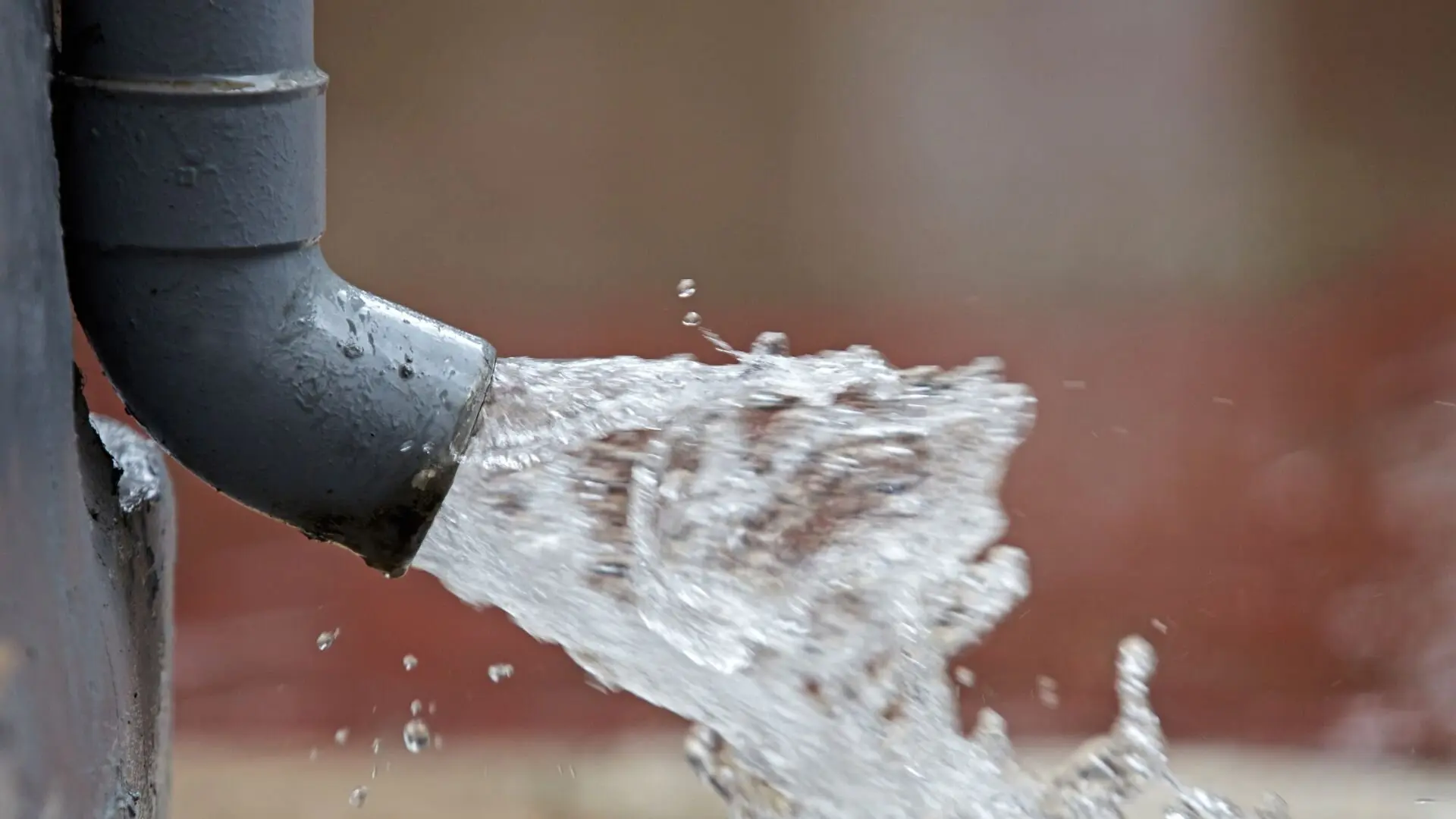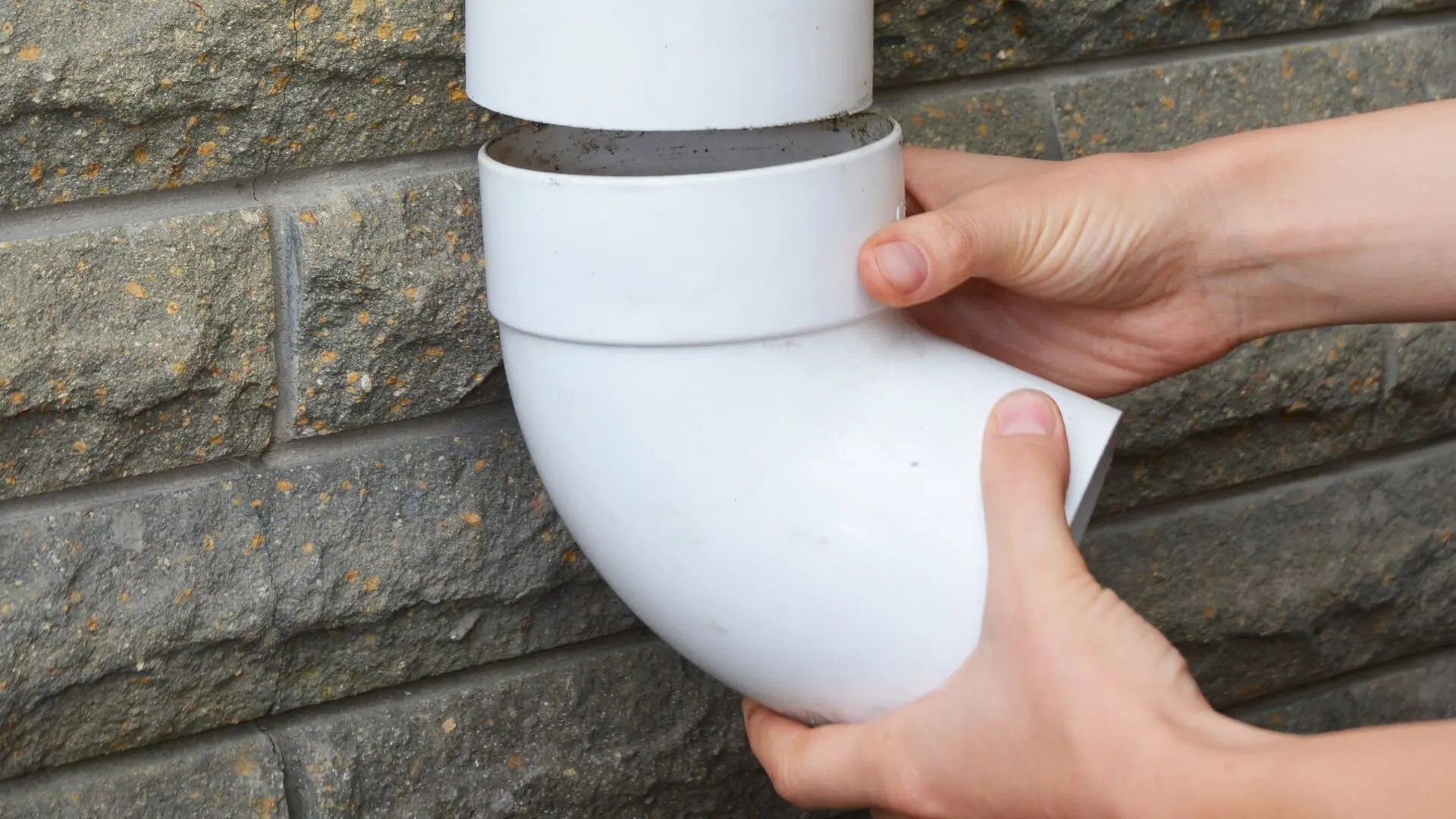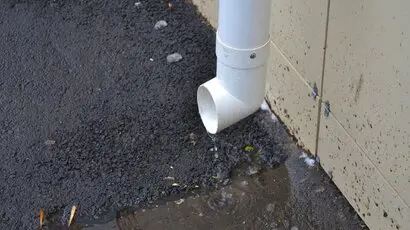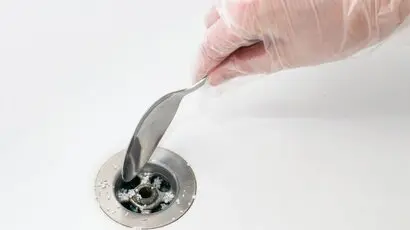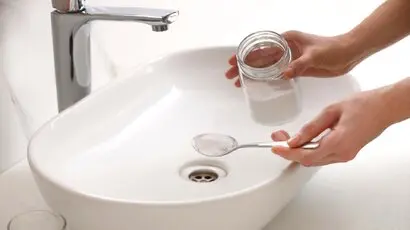It’s essential to keep your downpipes clear to ensure your home’s stormwater system functions well. When downpipes are free of blockages, rainwater flows smoothly off the roof, reducing the risk of structural damage or water pooling near your foundation.
Blocked downpipes are often caused by leaf litter, bird nests, or debris, particularly after storms. This build-up can lead to gutters overflowing and water seeping into your home’s walls and interiors.
In urban areas, downpipe blockages are often exacerbated by the higher volume of debris, including dirt and waste that washes off the roof. Regular maintenance, such as using a gutter vacuum or installing a guard, can help prevent downpipe blockages.
![]()
Recognising a Blocked Downpipe
Overflowing Gutters
One of the most apparent signs of a blocked downpipe is water spilling over the sides of your gutters. This overflow typically occurs during heavy rain when the downpipe cannot handle the volume of water due to a blockage. The overflow can lead to pooling water around the base of your home, which may cause structural damage over time.
Unusual Noises
Another indicator of a blocked downpipe is the presence of abnormal sounds, such as gurgling or splashing, coming from the gutters and downpipes during rainfall. These sounds arise when water struggles to navigate through the blockage, disrupting the flow.
Visible Debris
You might also notice visible signs of blockage, such as leaves, twigs, or other debris protruding from the downpipe’s mouth or caught in the gutter. These are clear indicators of potential blockages that could escalate if not cleared promptly.
Changes in Water Discharge
A reduction in water exiting the downpipe can also suggest a blockage. If you observe that less water than usual is flowing out during a storm, there’s likely a blockage affecting the water pressure and flow within the pipe.
Addressing the Issue
If you identify any of these signs, initiating the unblocking process is advisable to clear a blocked downpipe and restore proper drainage. For hard-to-reach blockages or if the problem persists despite your efforts, seeking professional help from a plumber might be necessary. They have the professional tools and experience to effectively manage and resolve a complex blocked downpipe.
Essential Tools and Materials for Unblocking a Downpipe
Tackling a blocked downpipe requires the right tools to clear it efficiently and prevent future problems.
- Gloves: Protective gloves are necessary to protect your hands from sharp debris and potential irritants.
- Plumber’s Snake (Drain Snake): This flexible, coiled tool is effective at reaching deep into downpipes to dislodge blockages caused by tree roots, compacted leaves, or other debris.
- Sturdy Ladder: High gutters require a stable ladder to safely bear your weight and reach the roof gutter.
- Garden Hose: A hose with good water pressure can help flush out loosened debris from the pipes. After using the snake, run water through the downpipe to ensure the blockage is completely cleared.
- Wire Coat Hanger: A thin piece of sturdy wire or a reshaped wire coat hanger can be used to poke through and break up smaller blockages near the entrance of the downpipe.
- Bucket and Trowel: These tools help remove build-up from gutters before they wash into the downpipes and create blockages.
- Safety Goggles: Wearing eye protection is advised to protect your eyes from flying debris during cleaning.
Professional Help
If these tools don’t do the trick or if the blockage is stubborn, you might need to call in the pros. A qualified plumber has the right tools and skills to tackle tough blockages efficiently.
Keeping up with regular maintenance and clearing debris from gutters and downpipes helps ensure consistent water flow and prevents future blockages.
Step-by-Step Guide to Unblocking Your Downpipe
Keeping your downpipes clear is vital for preventing water damage to your property. Our detailed guide will help you tackle any blockages effectively.
Preparation
- Safety First: Before you begin, wear protective gloves and safety goggles to protect against sharp and dirty debris. Ensure your ladder is sturdy and on a stable surface to prevent accidents.
- Gather Your Tools: You will need a plumber’s snake, a sturdy wire (or wire coat hanger), a garden hose with good pressure, a bucket, a trowel, and a ladder.
![]()
Step 1: Inspect and Clear the Gutter
- Access the Gutter: Safely climb the ladder to reach the roof gutter. For stability, always maintain three points of contact with the ladder.
- Remove Debris: Using the trowel, scoop out any leaves, twigs, and sediment from the gutter. This prevents additional blockages in the downpipes and ensures water can flow freely.
Step 2: Locate the Blockage
- Check the Downpipe Opening: Look into the top of the downpipe from the gutter to see if a visible blockage is nearby.
- Listen for Sounds: Tap along the pipe. A solid sound may indicate a blockage, while a hollow sound usually means the pipe is clear.
Step 3: Dislodge the Blockage
- Use a Plumber’s Snake: Feed the plumber’s snake into the downpipe. Move it up and down to break apart the blockage. If the blockage is stubborn, the coiled wire on the snake will help hook onto the debris to pull it out.
- Alternative Method with Wire: If you don’t have a plumber’s snake, a sturdy wire or reshaped coat hanger can work to poke through and disturb smaller blockages.
Step 4: Flush the Downpipe
- Run Water: Use the garden hose to flush water down the downpipe. This helps to clear any remaining debris and test if the blockage is gone.
- Check Water Flow: If water flows freely, the blockage is cleared. If not, repeat the previous step or consider stronger measures.
Step 5: Final Checks and Cleaning
- Reinspect: After flushing, inspect the gutter and downpipe again to ensure all debris is removed.
- Clean Up: Collect all removed debris and tools. Please dispose of the debris properly to prevent it from re-entering the drainage system.
Ready to Flow Smoothly Again?
Clearing a blocked downpipe is key to keeping your home’s drainage system in good shape. Begin by safely accessing your gutters and clearing out any debris. For more stubborn clogs, a plumbing snake or sturdy wire can be quite handy. Don’t forget to flush the downpipe with a garden hose at the end to clear any leftover debris.
If you encounter stubborn blockages or prefer a professional touch to ensure your drainage system functions flawlessly, consider contacting WP Plumbing. Our team of specialist plumbers offers expert services tailored to your specific needs, providing effective and long-lasting solutions to all your plumbing challenges. If you need help unblock a downpipe, WP Plumbing is here to help.

